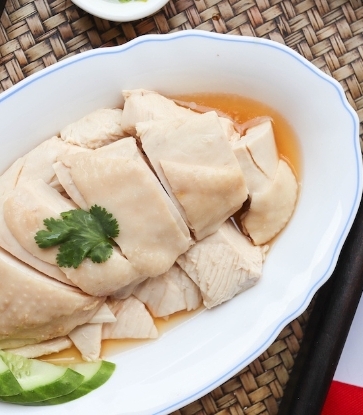In the 16th century, South Americans began using a special straw, the bombilla, to drink yerba mate, a tea infusion which contained so many shreds of leaves and stalks that they devised a tube of silver or bronze with a filter at the end to strain the solids. The bombilla is still widely used today.

Mass-produced straws did not come to prominence until the 1800s when the rye straw was invented. The grass was bleached and cut before further rinsing and binding and then sold for drinking with. The rye straw, with its tendency to disintegrate quickly and leave a residue in the drink, quickly fell out of fashion and was replaced by the paper straw, invented by an American named Marvin Stone.
Stone was born into a family that manufactured cylindrical objects such as cigarette rollers and pen holders. Discontent with using rye straws, he began to roll paper into a tube along the surface of a pencil, fixing the ends with glue and finally removing the pencil to create the paper straw. He later got a patent for the design. The paper straw took America by storm, with daily production reaching two million at its peak.
The Reign Of The Plastic Straw
The paper straw gradually lost favour in the 1960s as more took to its plastic counterpart. Plastic straws didn’t tamper with the flavour of drinks and didn’t dissolve in liquids. Moreover, it could be mass produced at very low costs. Its rise also coincided with another development — as refrigerators became more commonplace, so did chilled beverages best enjoyed when sipped from a straw.

Half a century of straw sipping later, a serious problem began to emerge. The problem with straws is one of sheer volume: Americans alone use an estimated half a billion of plastic straws every day. The large amount of plastic waste causes immense pressure to our ecosystem.
The Californian Coastal Commission points out that plastic straws were the sixth most common garbage found in local beaches between 1988 and 2016. Since plastic isn’t biodegradable, its final destination is often the landfill, or even worse, the ocean, where it does irreparable damage to nature.
In 2017, a sea turtle was discovered with a plastic straw stuck in its nostril. As its rescuer attempted to pull the straw out, the sea turtle bled and struggled violently while crying for help. The episode went viral online and was used as rallying cry for the anti-straw movement that has taken 2018 by storm. Environment organisations like The Last Plastic Straw, Be Straw Free and Strawwars.org rode the wave of public consciousness and urged the world to reduce its use of plastic straws.
The Last Straw
Straw activists have also taken to appealing directly to the food and beverage industry. More restaurants and dining groups have participated in the No Straw Campaign over the last few years. Following the advocacy of the Ocean Park Conservation Foundation Hong Kong, food chains such as Café de Coral, KFC and Yoshinoya have set up “no straw days”. These chains have stopped giving out plastic straws actively to encourage the customers to quit using them.

As non-biodegradable plastic straws are being phased out, alternative options have risen to the fore. Among these are products like the bamboo straw made by Brush With Bamboo and Strawesome’s straws made of glass. There is even a straw made of Ingeo, the biopolymer extracted from maize.
The Rise Of Stainless Steel Straws
This new trend has caught on also in Hong Kong. Two young entrepreneurs founded a company called Bucket in January 2017, selling stainless steel straws of various designs. The products are available at home décor shops like Wai Chi Street Playground and Something Wild in Hong Kong, and Gorilla Store in Macau. Durable and resistant to acids and bacteria, the straws are produced with Japanese standard stainless steel. Bucket also offers straw washers to the restaurants. It has already garnered the support of more than 100 eateries including Cafe R&C, Artisan Garden Cafe and ethos.
Hymas Ho, representative of Cafe R&C told us their target customers are younger and eco-conscious. Hence reusable straws aren’t a problem for them. Most drinks at the café are served with Bucket’s stainless steel straws in support of its enthusiasm towards environmental protection.The Return of Paper Straws
While some restaurants move forward in search for a solution to plastic straws, others return to tradition. The campaign for paper straws was launched by CNN founder Ted Turner and his business partner George McKerrow. After many twists and turns, they contacted a paper straw company which had ceased to operate. They promised to buy its straws at a higher price to convince them to recommence production. Further to that, paper straw is now completely adopted at Ted’s Montana Grill, the steakhouse opened by the duo. They hope this would be the forerunner to a new fashion, as more restaurants join their ranks to contribute to the common good of the world.
Food joints in Hong Kong are quick to respond to Turner and McKerrow’s endeavour. One of them is Tai Hang bakery Plumcot. It only provides paper straws for lemon water and other beverages. InterContinental Grand Stanford Hong Kong’s Italian restaurant Theo Mistral by Theo Randall is also serving only paper straws. The hotel stated since contact with liquid would soften paper, they tested a number of products when they decided to introduce paper straw.
The chosen one performs well in this front, maintaining its firmness for more than an hour after being submerged in liquid. Although paper straw have a higher manufacturing cost and are less durable, it is also biodegradable, which makes it an eco-friendly option that warrants our support.























